As John Lennon puts it, “The more I see, the less I know”.
This is the recurring thought I had from the moment I stepped into Torres del Paine National Park, which is located at the famous Patagonia region of southern Chile. Picture this: gorgeous shades of milky-blue glacial lakes, mighty glaciers spanning kilometres, golden grass fields and the towering snow-capped Andes mountains. This highly protected and fragile national park is a favourite amongst nature photographers as it represents some of the most beautiful and diverse landscapes on Earth. For the lucky few, it offers a glimpse of the elusive puma out in the wild. No wonder it is a World Biosphere Reserve under UNESCO.
The best way to explore this natural beauty is to do a multi-day trek along either the W-circuit or the O-circuit. Alternatively, some tourists do a day trip to visit the main attraction of the trek – the iconic three towers of granite which gave the national park her name. However, I strongly recommend you spend more time in the national park because her beauty cannot be fully absorbed in one sitting.
To further convince you, here are five reasons why Torres del Paine National Park offers the ultimate trek for the adventurer in you.
1. It has world-class views of glaciers, mountains and lakes
Glaciers? Check! Lagoons? Check! Deep blue Lakes? Check! Towering Snowcapped mountains? Check! Open grasslands? Check! Autumn-hued forests? Check! Muddy wetlands? Check! Winding canyons and valleys? Check! Adrenaline-pumping suspension bridges? Check!
The trek through Torres del Paine National Park offers something for every nature lover. The variety in landscapes and sceneries means that your Instagram photo feed will appear as if you went around the world in a week.
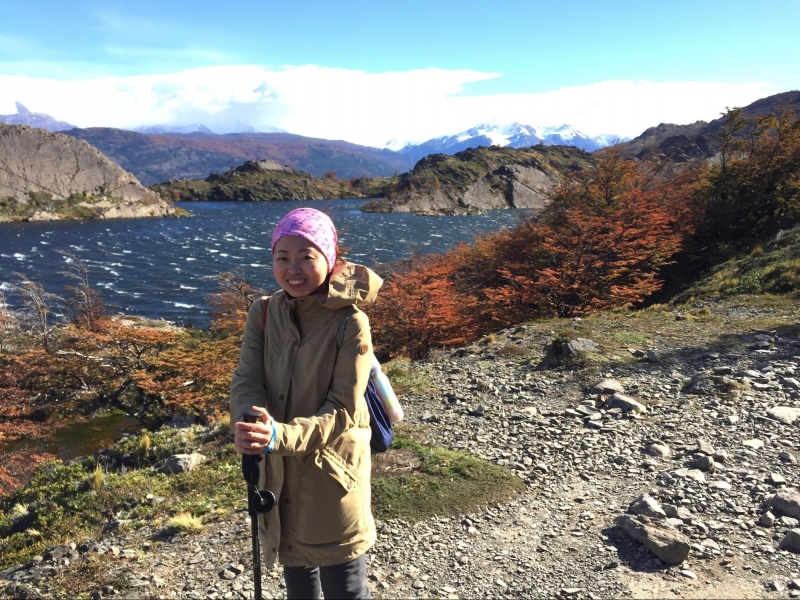
Soak in the soft sunshine while enjoying Laguna Los Patos and the autumn-hued trees.
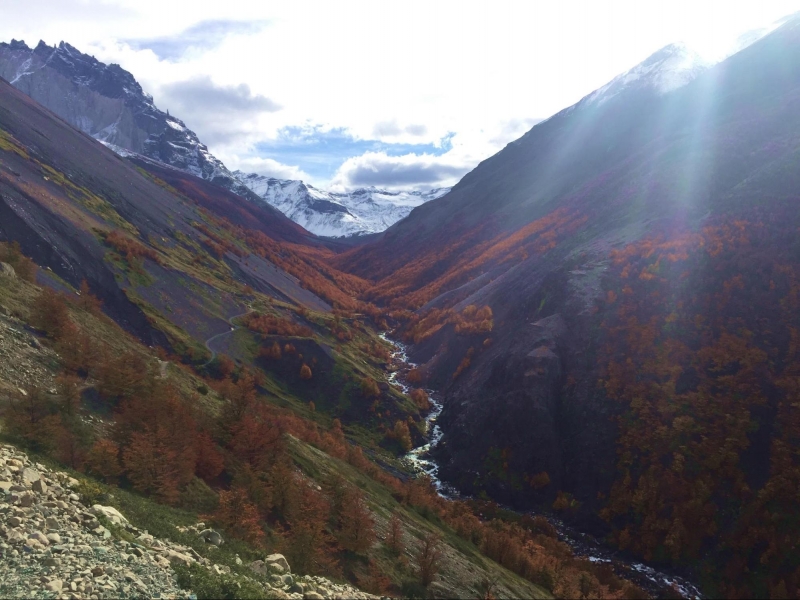
Venture through picture-perfect tranquil valleys leading to Refugio Chileno.
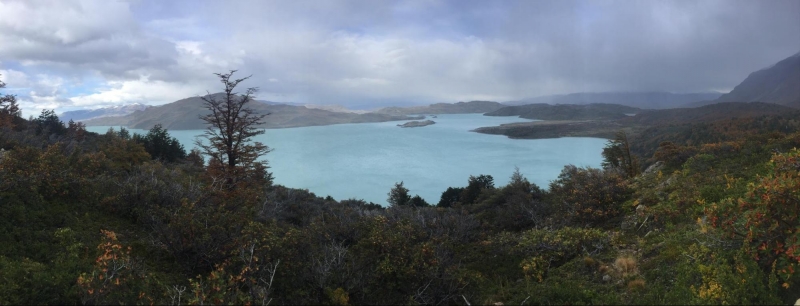
Lago Nordenskjöld. Not all lakes were made the same. Ever wondered why some lakes are milky-blue? Answer: The minerals from glacier meltwater.
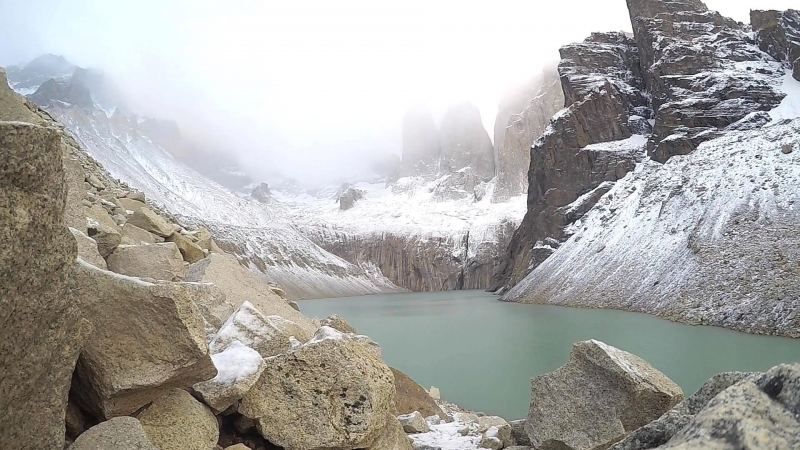
This spectacular view is the prize for four days of hiking and sore legs. Here, the three towers were obscured by the thick morning fog. Should you embark on this trip, keep your fingers crossed because in Torres del Paine National Park, the weather is ever-changing.
2. Trekkers don’t have to deal with altitude sickness
For many amateur trekkers, one of the greatest barriers to trekking in mountainous terrains is the altitude sickness that hits even the fittest of the lot. For sea-level dwellers like us, altitude sickness is like a vacuum cleaner that sucks out every breath, making every small movement a serious workout. Thankfully, there is no need to acclimatise for the Torres Del Paine treks. The highest point of Torres Del Paine National Park is 2,884 metres, which is below the 3,000-metre mark where altitude sickness sets in. That said, the trek is no walk in the park. There are multiple elevation gains and losses throughout the trek and having good hiking boots and poles help a lot.
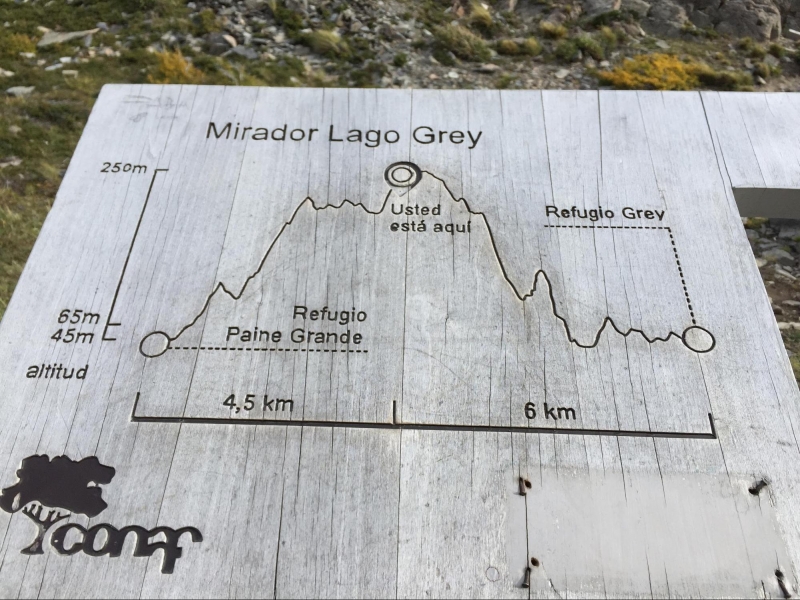
One of the many signs along the route by the Chilean National Forest Corporation (CONAF).
3. The cool weather is comfortable for hikes
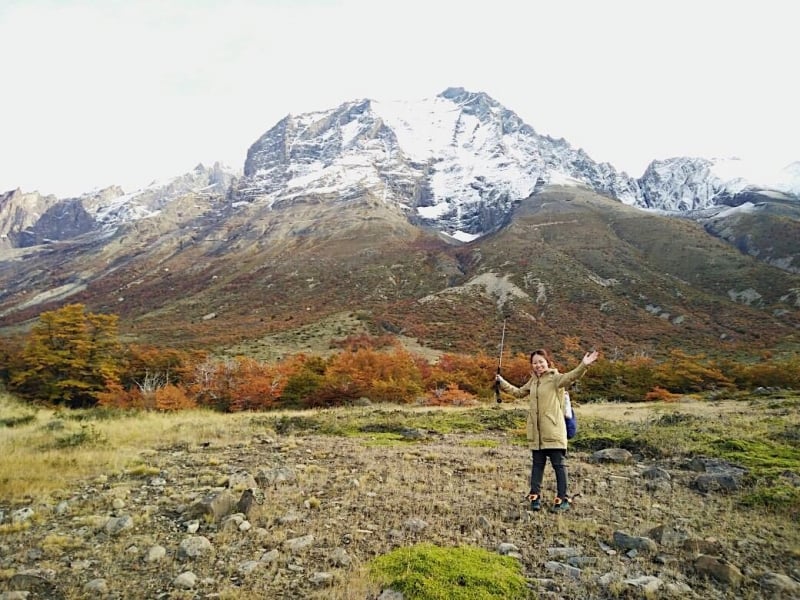
Living in the hot and humid tropics, I know too well that trekking in the heat is torturous and bad weather can discourage many casual trekkers. Seriously, you will be hard-pressed to find someone who enjoys doing a 21-kilometre route march here in Singapore. But if you offer me the chance to trek Torres Del Paine again, I will be the first to volunteer. The chilly temperature combined with the body heat from hiking keeps you comfortable as you make your way through the paths. Furthermore, there are no pesky bugs unlike in tropical areas.
4. The streams offer fresh glacier water for thirsty hikers
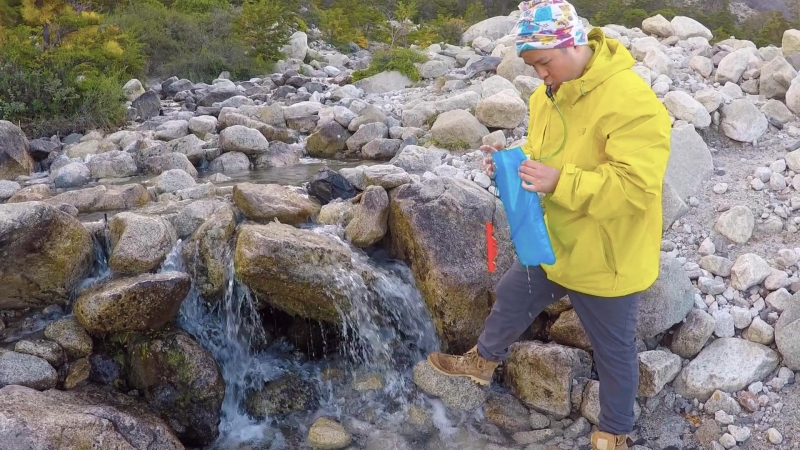
Forget about carrying heavy bottles of water for the multi-day treks! Freshwater is readily available, which means that you only need a lightweight water bag. There are streams and natural water points everywhere. Mother nature is indeed the best provider, gifting cooling glacier water for the thirsty travellers that come in seek of her beauty.
5. It fits a range of budgets
There are FREE camps run by CONAF which provide very basic facilities for those who can rough it out. There are also private camping grounds run by two companies – Fantástico Sur and Vértice Patagonia – which provide better services and facilities.
But if sleeping in tents is not what you imagine to be an enjoyable vacation, Torres del Paine National Park offers you the opportunity to be close to nature without the inconvenience of being out in the wild. Strategically located within the parks are well-appointed refugios that provide comfortable bunk beds and clean toilets. There are fireplaces to keep warm, where you can meet and trade stories with other travellers. You can also enjoy delightful three-course meals in the refugios should your cooking skills be as rudimentary as a pre-historic caveman. All these luxuries are available at a reasonable price (under S$400 per person for three nights) which makes Torres del Paine National Park a highly accessible nature adventure for all ages and budgets.
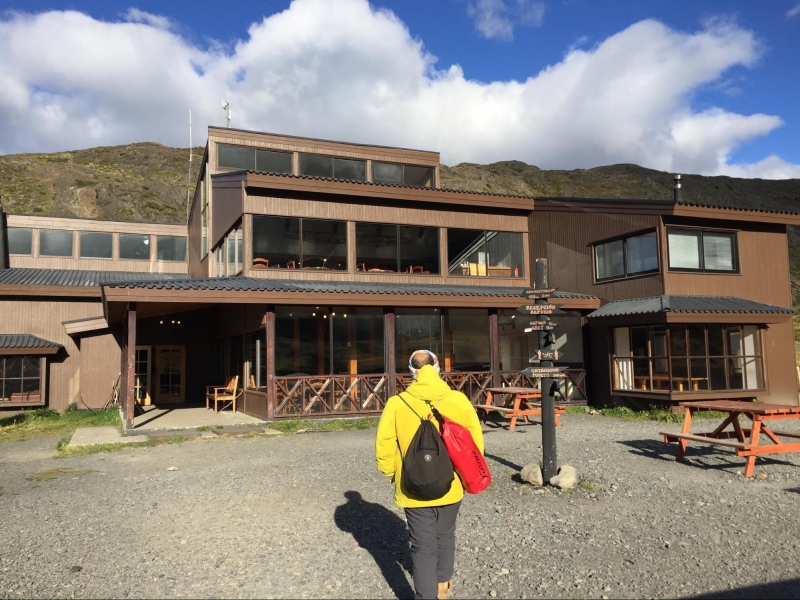
Torres Del Paine’s landscape is truly amazing and one of the highlights of Chile. You may shed a few kilograms and leave with sore legs but most importantly, you will gain a journey that you will remember for life. This recollection might just give you the strength to overcome any other mountains in your life.




